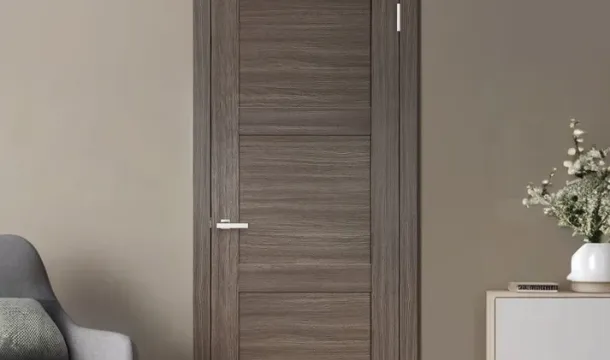Current Trends Shaping Sustainable Practices in Door Manufacturing
Popular Articles
- Choosing the Perfect Interior Doors for Your Canadian Home
- A Complete Guide to Choosing Interior Doors for Canadian Homes
- The Challenges of Painting Interior Doors
- Understanding Interior Doors and Their Role in Your Home
- The Perfect Blend of Reliability and Design: Interior Doors with Italian "Sandwich" Technology
Switching to FSC-certified wood and rapidly renewable materials reduces environmental impact without compromising durability. Manufacturers increasingly prioritize sourcing from responsibly managed forests, ensuring traceability and compliance with international sustainability standards.
Incorporating recycled content, especially in composite and metal doors, lowers the carbon footprint by minimizing raw material extraction. For example, steel doors made with up to 90% recycled material maintain strength while decreasing energy consumption during production.
Advanced low-VOC finishes and water-based coatings improve indoor air quality and reduce harmful emissions. These treatments not only meet stricter environmental regulations but also extend product lifespan by enhancing resistance to wear and moisture.
Energy-efficient door designs featuring improved insulation cores, such as polyurethane or mineral wool, contribute significantly to reducing heating and cooling costs in residential buildings. Canadian homeowners benefit from these innovations through increased comfort and lower utility bills.
Adopting modular manufacturing processes enables waste reduction by optimizing material usage and facilitating easier repairs or upgrades. This approach supports circular economy principles while offering greater customization options for designers and consumers alike.
Low-Impact Materials Selection
Selecting materials with minimal environmental footprint significantly reduces the carbon emissions associated with door manufacturing. Bamboo, for instance, grows up to 3 feet per day and reaches maturity in 35 years, making it a rapidly renewable resource. Its tensile strength rivals that of steel, offering durability without sacrificing sustainability.
Reclaimed wood presents another viable option, utilizing salvaged timber from demolished structures or surplus lumber. This approach diverts waste from landfills and preserves old-growth characteristics without further deforestation. For example, reclaimed oak doors can retain their natural patina while providing structural integrity comparable to new hardwood.
Innovative Composite Alternatives
Composite materials blending recycled plastics with wood fibers reduce reliance on virgin resources while enhancing moisture resistancecritical for Canadian climates prone to humidity fluctuations. Products like Wood-Plastic Composites (WPC) exhibit lower lifecycle greenhouse gas emissions compared to traditional MDF or particleboard.
Bio-based resins derived from plant oils are gaining traction as binders in door cores instead of formaldehyde-based adhesives, improving indoor air quality and reducing toxic emissions during production. Choosing certified low-VOC finishes complements these materials by minimizing off-gassing over time.
Waste Reduction Techniques
Implementing precise cutting technologies like CNC routers minimizes offcuts by optimizing material layouts based on digital nesting software. This approach can reduce wood waste by up to 20%, lowering costs and environmental impact simultaneously.
Reusing production scraps as composite fillers or bonding agents extends raw material usage. For example, sawdust and veneer trimmings can be processed into particleboard cores, reducing dependence on virgin wood fibers.
Lean Manufacturing Principles
Applying lean methodologies targets the elimination of non-value-added steps. Streamlining workflows reduces inventory excess and avoids overproduction, directly cutting down scrap rates. Just-in-time delivery systems ensure materials arrive only as needed, minimizing storage damage and obsolescence.
Closed-Loop Recycling Systems
Integrating closed-loop recycling allows manufacturers to reclaim defective doors or components for reprocessing. Mechanical grinding combined with adhesive separation techniques recovers usable fibers, which can be reincorporated into new door panels without compromising quality.
Data-driven waste tracking tools provide real-time insights into loss points across production lines. Monitoring scrap types and quantities enables targeted interventionssuch as equipment calibration or staff trainingto consistently lower waste generation.
Energy-Saving Production Methods
Installing advanced heat recovery ventilation (HRV) systems in manufacturing facilities reduces energy consumption by reclaiming up to 85% of exhaust heat. This technology cuts heating costs during colder months and lowers overall carbon emissions without compromising indoor air quality.
Switching to variable frequency drives (VFDs) on motors and pumps enables precise control of energy use based on real-time demand, reducing electricity consumption by 20-30%. Integrating VFDs with smart sensors optimizes operations, especially in sanding and cutting machinery.
Optimizing Thermal Processes
- Utilize infrared drying ovens with zoned temperature controls to decrease curing times for door finishes by up to 40%, significantly lowering energy usage compared to conventional convection ovens.
- Adopt electric induction heating for metal components, which delivers rapid, targeted heat with minimal loss, improving efficiency over traditional gas-fired burners.
Implementing Renewable Energy Sources
- Deploy rooftop solar panels sized to cover at least 50% of the facility's daytime power load, ensuring a steady supply of clean electricity that offsets peak-hour grid demand.
- Install onsite battery storage systems paired with solar arrays to store surplus energy generated during low-demand periods for use during production peaks or after hours.
Automating lighting through occupancy sensors and daylight harvesting can cut lighting energy use by more than half. Using LED fixtures rated above 100 lumens per watt further enhances savings while maintaining ideal illumination levels for detailed craftsmanship.
Popular Articles
- Choosing the Perfect Interior Doors for Your Canadian Home
- A Complete Guide to Choosing Interior Doors for Canadian Homes
- The Challenges of Painting Interior Doors
- Understanding Interior Doors and Their Role in Your Home
- The Perfect Blend of Reliability and Design: Interior Doors with Italian "Sandwich" Technology

Choosing the Perfect Interior Doors for Your Canadian Home

A Complete Guide to Choosing Interior Doors for Canadian Homes
